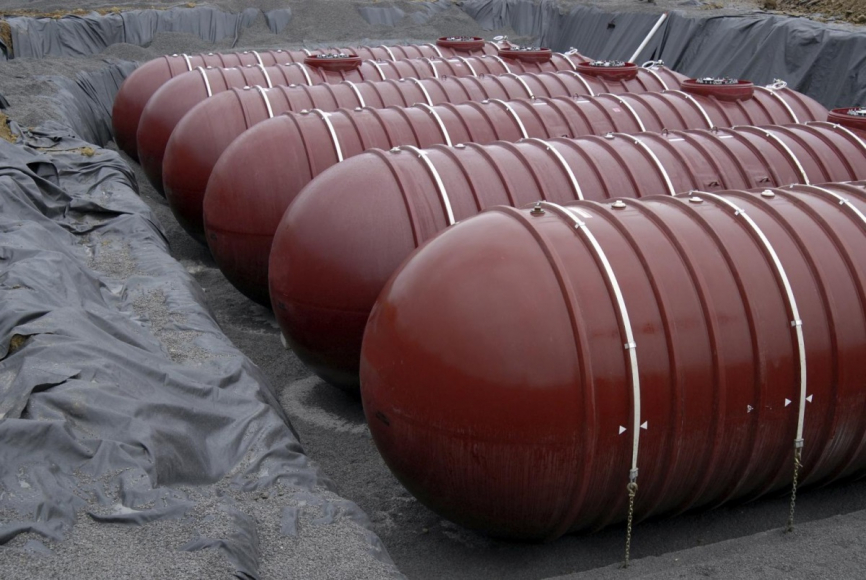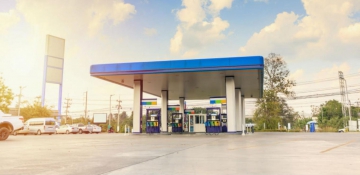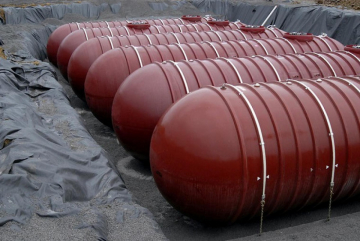An explanation of the origin & highlights of the new UST regulations, and actionable next steps to help you identify gaps in your compliance efforts.
For the retail petroleum industry, Oct. 13, 2018 was a landmark day, representing the latest major compliance deadline for new federal underground storage tank (UST) regulations. And despite years of preparation, compliance didn’t come easy for station owners—and perhaps not at all for some.
“Retail gasoline station owners have been preparing for this day since Environmental Protection Agency (EPA) published revised UST regulations back in July 2015,” Mark Robinson, PE, CHMM, CPEA, Oil & Gas Segment Consultant for Antea Group, explains. “However, we know many retailers were still scrambling to bring their stations into compliance last week—especially those with operations across multiple states.”
Of course, while some states and territories have been granted longer UST compliance timelines, the latest wave of deadlines have come and gone—and others still loom. However, regardless of when and where you need to comply, there’s no time like the present to take action to ensure your stations are on-track for compliance and you may even find there’s still an opportunity to shape how you comply.
To lend a helping hand, we provide a brief explanation of the origin and key aspects of the new regulations, and actionable next steps to help you identify gaps in your compliance efforts.
The Basics
Back in 2005, the Energy Policy Act ushered in a new regulatory era for energy production in the United States. One of the subtitles to the Energy Policy Act of 2005 was the Underground Storage Tank Act, which authorized development of the key regulatory changes by Environmental Protection Agency (EPA) to the UST program. A decade later, EPA published revised underground storage tank regulations, which were focused on operating and maintaining UST equipment and preventing and detecting UST releases. Shockingly, this was the first major revision to federal UST regulations since 1988.
The Changes
Secondary & Under-Dispenser Containment
As part of the EPA’s goal to ensure containment systems are optimized for leak deterrence, the new regulations require owners and operators to install secondarily contained tanks and piping when installing new or replacing old system components. You also must use interstitial monitoring as release detection for new tanks and piping. Finally, under-dispenser containment is now required for all new dispenser systems.
Your Next Step: Assess your system(s) for components that will need to be upgraded – either in response to the deadlines in your state or as an outcome from mandated inspection and testing requirements outlined below.
Underground Storage Tank Operator Training
In order to ensure that underground storage tanks are properly maintained and monitored by knowledgeable on-site staff, the EPA established training requirements for Class A, Class B, and Class C UST operators. While UST operator training requirements vary slightly from state to state, training and certification is required for Class A or Class B Operators within 30 days of assuming duties. Class C Operators must be trained before assuming duties. Mandatory re-training may be required if noncompliance is found upon inspection.
Your Next Step: Confirm that your UST operators have completed the necessary, state-specific training and certification. Furthermore, develop a documentation system to keep track of the name, approved locations, and certification credentials of each operator in your employ. Antea Group offers state-approved UST operator training courses in dozens of states.
Inspections & Testing
Of course, no new set of regulations would be complete without additional operation and maintenance requirements. As of the October 13, 2018 deadline, owners or operators must conduct monthly walkthrough inspections at their UST facilities. In addition, inspections of overfill prevention equipment, testing spill prevention, containment sump, and release detection equipment were added.
Your Next Step: Four key actions will be necessary for retail station UST operators:
- Develop and implement a walkthrough inspection checklist and keep your completed checklists for at least 12 months. Many states have required forms that must be completed and retained.
- Be sure to remove liquids from the sumps and spill prevention equipment with each inspection – keeping in mind that “liquids” include both product and water. Make sure that you have a plan for managing liquids that are removed from sumps and spill prevention equipment.
- For your other inspections and testing, schedule your vendor well in advance of your compliance date in the event that your system needs a repair and re-test. State inspectors have issued Notices of Violation or red-tagged systems where no re-test was conducted after a repair.
- Lastly, during the inspections, take note of areas where water is consistently infiltrating and consider replacing or upgrading sumps, spill prevention equipment, covers, etc. Water in your tanks or around your system components starts the corrosion process, leading to component failures and eventually releases. Minimizing water contact with your system components reduces your risk of releases and your costs to dispose of petroleum-impacted water.
System Compatibility
New requirements also require owners to ensure UST system compatibility before storing certain biofuel blends. The EPA calls these new blends “emerging fuels,” with ethanol being a familiar example. If underground tank systems aren’t a good match, these fuel blends have the potential to increase corrosion and lead to harmful releases. And it’s not just the tanks that should be considered, it’s all the components in your dispensers that are in contact with the fuel: the piping, dispensers, spill/overfill equipment, release detection equipment, valves, fittings, and even sealants.
Your Next Step: Keep records from the manufacturer demonstrating compatibility of UST system components, such as probes and sensors, that are in contact with the fuel blend components for as long as the UST system stores that blend. One key insight from the 2018 National Tanks Conference: make sure your pipe dope and sealants are compatible with fuel blend components, too.
Emergency Generator Systems
The new regulations also remove past deferrals for emergency generator tanks, field constructed tanks, and airport hydrant systems. While this is perhaps the most minor of all changes, it’s often the most overlooked in our experience.
Your Next Step: Evaluate the USTs that supply fuel to your emergency generator for compliance with the new regulations and ensure you have a trained and certified UST Operator for those systems. Don’t forget to include the walkthrough inspections and testing requirements as well. While many organizations have proactively removed their previously deferred emergency generator UST systems and replaced them with aboveground tank systems, those that haven’t will need to practice all of these new requirements previously discussed – and plan on visits from their state UST inspectors.
Codes of Practice
Codes and standards are critical to ensure that underground storage tank systems have been properly designed, constructed, and installed, and are well-maintained. As part of the updates, the EPA also modified its codes and standards in several areas including corrosion protection, assessing tank integrity, and closure.
Your Next Step: During the 2018 National Tanks Conference last month, presenters showed that corrosion, water intrusion, and resulting leaks can occur unexpectedly in UST systems and their components. Retailers should engage their equipment suppliers and installers with questions about water intrusion and fuel compatibility for new and existing equipment. Keep your records and warranty documents for the life of the system.
Take Action to Unearth Gaps & Opportunities
With the new UST regulations now in effect, now is the time to take action to be in compliance and ensure the health and safety of your customers, community, environment, and business.
At a minimum, you should conduct a gap and opportunity analysis to make sure you have your compliance bases covered. Consider hiring a firm to assist you with this task if it is overwhelming. In addition, if your facilities are located in states that have longer compliance timelines, find out if there’s still time for you provide your comments on the emerging Rules. Your comments can make a difference!
“Fines for noncompliance are steep,” Mark says. “But beyond avoiding fines, station owners and operators may have the opportunity to give feedback during the rule development process.”
“Get in touch with your local industry friends and groups, and coordinate with each other to share your thoughts and feedback with the state,” he adds. “This can make it possible affect the rules in a way that can be very beneficial to your business and industry as a whole.”
If you feel you lack the in-house expertise or bandwidth to understand the status of your UST compliance efforts, we can help.
Check out our Oil & Gas Segment page to learn about the full breadth of our consulting and support services.
Want more news and insights like this?
Sign up for our monthly e-newsletter, The New Leaf. Our goal is to keep you updated, educated and even a bit entertained as it relates to all things EHS and sustainability.
Get e-NewsletterHave any questions?
Contact us to discuss your environment, health, safety and sustainability needs today.





